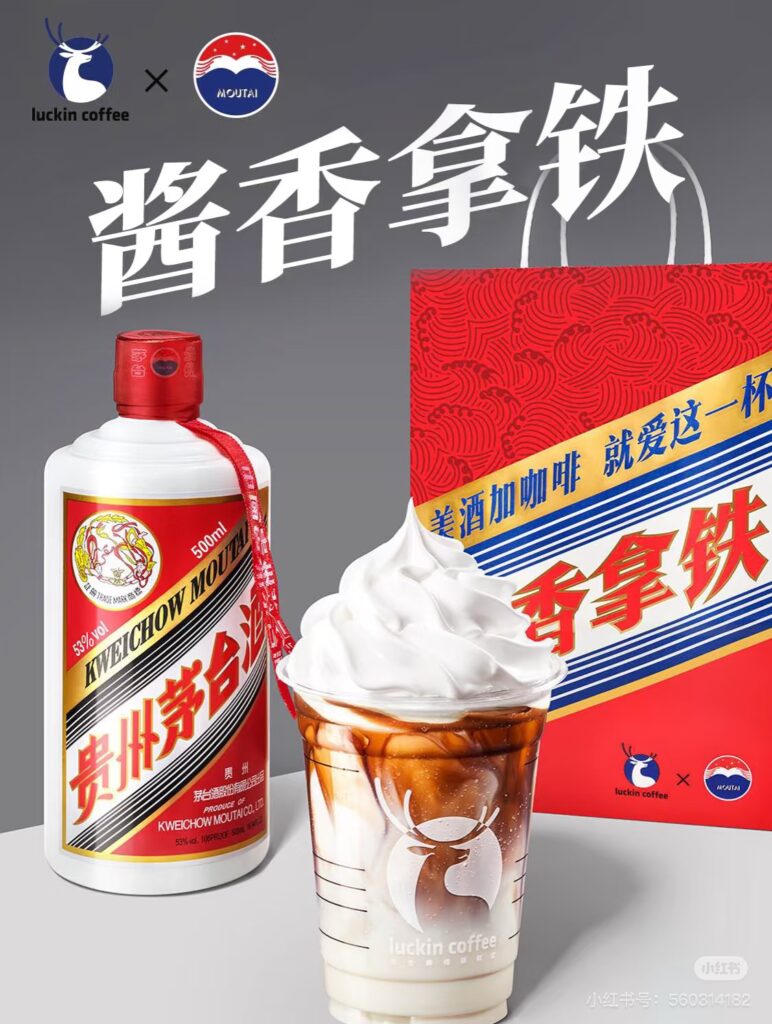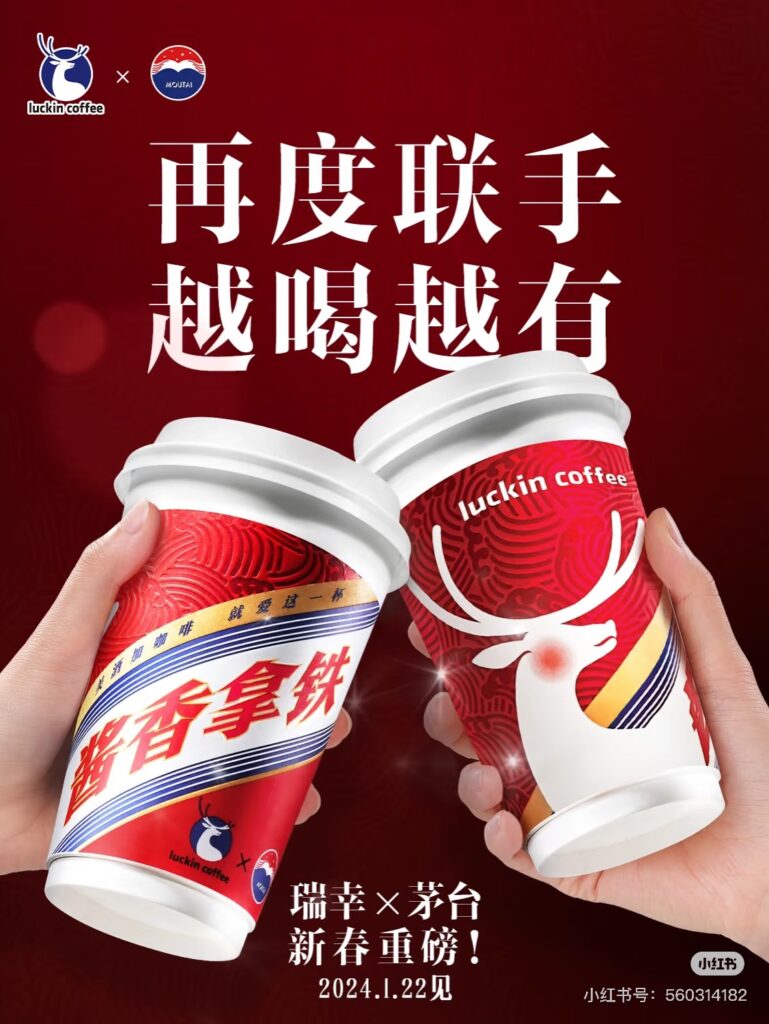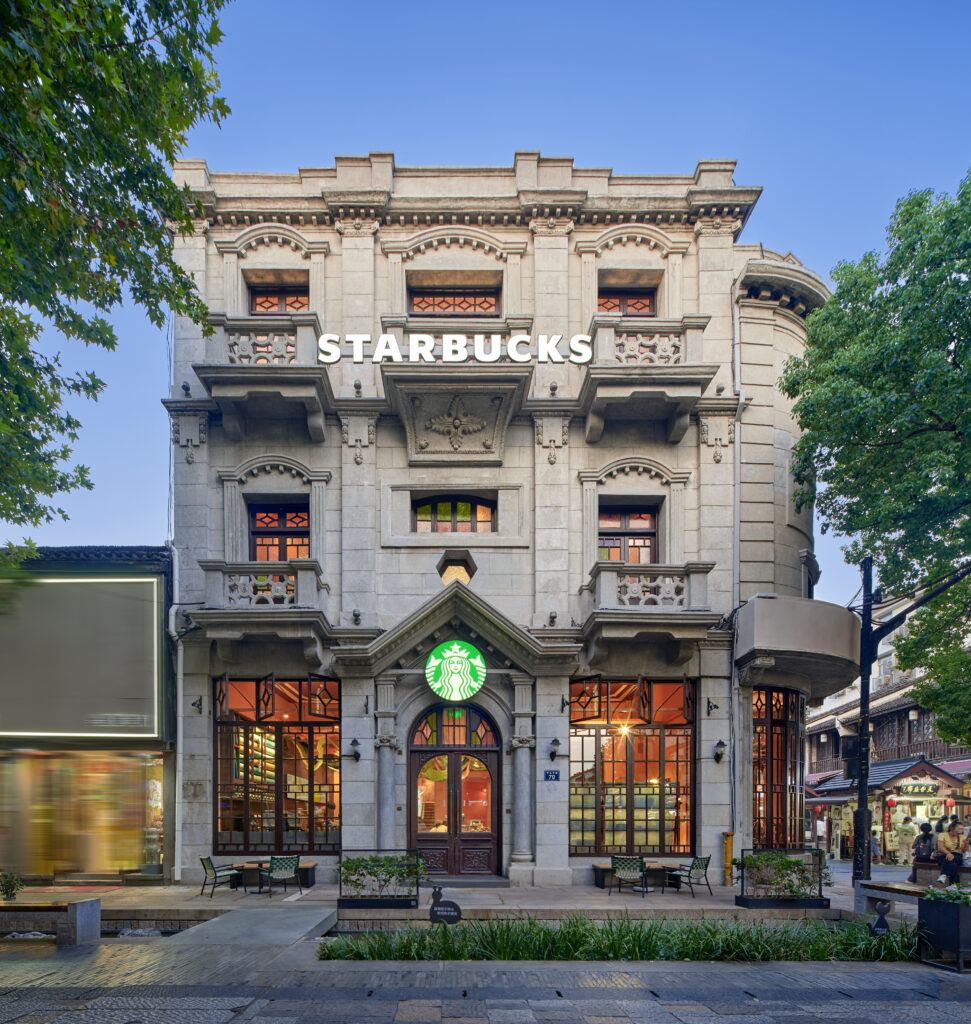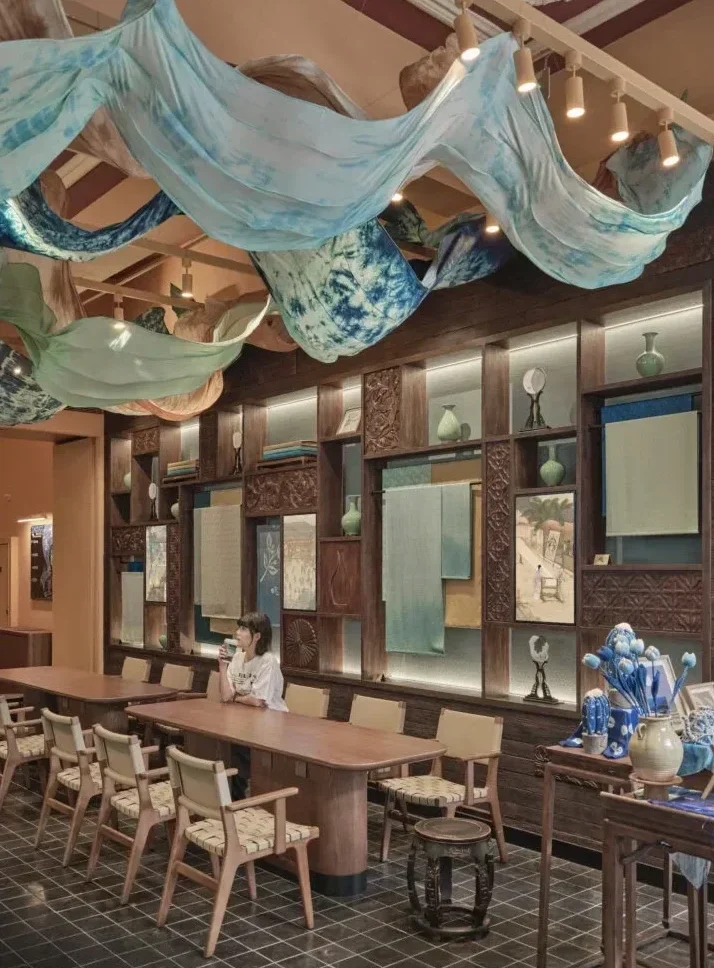A Look at the Guó Cháo Coffee Trend in China
China’s coffee boom is being reshaped by this movement, driving new branding strategies and consumer engagement across both major chains and specialty cafés.
10 September 2025
Share this exclusive content from Saladplate
China’s coffee industry has been brewing up a cultural storm.


Jiangxiang (Fragrant Sauce) Latte that used Moutai liquor flavoured milk containing 0.5% alcohol | Photo credit: Luckin Coffee TikTok pages
Like many industries, coffee brands across the board are reacting to the meteoric rise of the Guó Cháo movement. Guó Cháo refers to the growing consumer appetite for products that celebrate Chinese culture, heritage, and aesthetics, often with a modern, fashionable twist. Originally tied to fashion and lifestyle, it’s now influencing food and beverage branding including the emerging and booming coffee industry.
What was once regarded as an exclusive Western import, coffee in China has evolved significantly over several decades, reflecting broader social, economic and cultural changes. Coffee has now become a common part of daily routines for many Chinese people and has become a thriving, integrated part of contemporary Chinese culture.
China’s overall number of branded coffee outlets grew by 58% over the last year and overtook the US with more than 49,000 outlets.
Luckin Coffee, born in China in 2017, quickly became the country’s fastest-rising coffee brand that has grown into a global powerhouse. The brand overtook Starbucks to become China’s largest coffee chain with more than 10,000 stores in 2023. Fast forward to July 2025, the brand now has over 22,000 stores in China and about 4000 others in overseas markets.
Successfully riding the Guó Cháo wave, the brand made headlines with its collaboration with the iconic Chinese liquor Moutai. They masterfully merged coffee with national cultural symbolism and introduced Jiangxiang (Fragrant Sauce) Latte that used Moutai liquor flavoured milk containing 0.5% alcohol. The creative packaging which included the iconic red Moutai branding undoubtedly contributed to the launch becoming a viral success. The campaign amassed views in the hundreds of millions across platforms, which translated into 5.42 million cups sold on launch day alone.

An Intangible Cultural Heritage (ICH) concept store by Starbucks | Photo credit: Starbucks
Starbucks, a fundamentally Western brand icon, is responding to fierce local competition and differentiating themselves by creating immersive spaces which embed local artistry and heritage into both design and brand experience. To date, the brand has launched five unique “Intangible Cultural Heritage” (ICH) concept stores across China that celebrate local craft traditions. The latest one opened in August 2025 in Hangzhou. The store design pays tribute to Hangzhou’s traditional craftsmanship, Hang Luo weaving. Entering this store, the customer is made to feel like stepping back in time to a Hang Luo cloth workshop centuries ago.

Photo credit: Starbucks


Hefang Street pays homage to historic hang luo cloth workshops | Photo credit: Starbucks
The boutique bar and atrium’s open-air area are surrounded by expansive Hang Luo cloth curtains. Customers are immersed in a breath-taking century-old cloth shop while they enjoy a premium selection of Starbucks Reserve coffee and appreciate the unique charm of Hang Luo’s intangible cultural heritage. Starbucks China has been rooted in Hangzhou for over 20 years, with a rich legacy of over 450 stores. The Hefang Street Hangzhou Intangible Cultural Heritage concept store is the latest example of its long-term commitment to deeply connecting with local culture, according to a media release issued by the Starbucks China Communications team.
The four other locations, each with its own unique artisanal theme, include Shanghai (embroidered cheongsam patterns), Beijing (hutong culture), Suzhou (art gallery set in a Suzhou-style garden pavilion) and Nanjing (rural women artisans). In addition, Starbucks launched a limited-edition intangible cultural heritage gift—a Bai ethnic group tie-dye keychain—to further explore the commercial value of intangible cultural heritage.
In March 2024, President Xi Jinping praised coffee produced in Yunnan province, describing it as a product that represented China. This strong political endorsement bolstered the domestic coffee movement even more and led to consumers increasingly seeking “single-origin Yunnan beans” over imports. Yunnan coffee is branded as a national treasure, further leveraging Guó Cháo values of homegrown quality and sustainability.
China’s coffee market is projected to expand at a robust Compound Annual Growth Rate (CAGR) of 8.7% between 2022 and 2027, significantly outpacing the global rate of around 2%. Compared to more established markets in Europe or the US, China’s coffee market is in its infancy, with lots of room to keep on growing. The coffee industry in China today has transformed from Western mimicry to a distinctively Chinese expression of taste and self-identity.
From slow-extraction herbal medicine brewing techniques to produce “stewed” coffee, to innovative TCM (traditional Chinese medicine) flavoured drinks using ingredients such as osmanthus, tangerine peel and low sugar alternatives such as monk fruit, Guó Cháo coffee is not just a novelty, it’s a cultural movement that has matured into a full-fledged growth strategy. Global chains and domestic players alike are utilising this strategy to differentiate themselves in an increasingly crowded market. From packaging suppliers to cultural institutions, this trend signals new and exciting opportunities to partner with an increasing number of brands that are collectively moving in this direction.
Author: Li May Loo
Limay is a freelance writer, a passionate storyteller, and a dedicated foodie who has spent the past 20 years living in China, with the last 12 years immersed in the rustic charm of Dali countryside. A city girl at heart, she balances the quiet rhythm of rural life with a deep curiosity about people, places and flavours.



